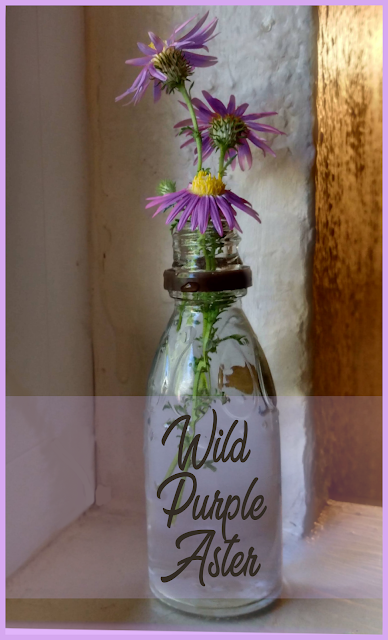The fall of the year is when Wild Purple Asters, after hanging on all through the blazing summer days, suddenly bloom in profusion.
In the desert, members of the aster family need no irrigation or watering to blossom, but bloom more heavily if watered. Along the roadsides and the Rio Grande, they form clumps of thousands of blooms, and busy bees and other pollinators feast on as much nectar as they can hold in preparation for the coming winter.
Every corner of the nation has its own wild purple asters. Some are edible, like the New York Aster, with blooms placed in salads, and leaves brewed into a tea.
Foraging for wild foods was something our ancestors did, and the knowledge was passed down from generation to generation. My mother knew a great deal of such lore, but I was taught only a fraction of her knowledge. Still, I learned about hundreds of plants. I know how and when to dig sassafrass roots, how to make ink out of beautyberries, and how to fold blades of Southern Cut Grass to make a whistle. While I know a lot about Southern wild plants, I have had to try to learn about the native plants in each area of the country I find myself in. In the desert of New Mexico, I have discovered jujube trees, "ditch asparagus" (asparagus that thrives in the irrigation ditches that branch out all along the Rio Grande), "tunas" (the fruit of the Prickly Pear), mesquite bean flour, and piñon nuts, and now the beautiful asters, too. The desert seems very sparse compared to the other places I have lived, but sometimes we have to be happy with less, and look a bit harder for beauty.I have also begun "gleaning," which is going to a picked field and finding overlooked or damaged fruits or vegetables, AFTER the harvest and AFTER the farmer has gleaned. On the NMSU campus, I found two bags of dried corn on the cob within twenty feet of perhaps eight rows. Dipped in wax that has lost its scent from my wax warmers, they make fantastic fire-starters, as do pinecones. The dogs also greatly enjoy carrying "their" corncobs around. The chiweenie picked one that is nearly as big as he is. I have found several onions that fell off the onion wagons, and cotton that is scattered like snow along the shoulder of the lanes after threshing.
Do you forage for any wild foods or decorative plants in your area?
Kind regards,
Olde Dame Holly Rose








0 Prim and Elven Friends have commented... :
Post a Comment
Have a comment to share? I hope you do! I love hearing what others have to say.